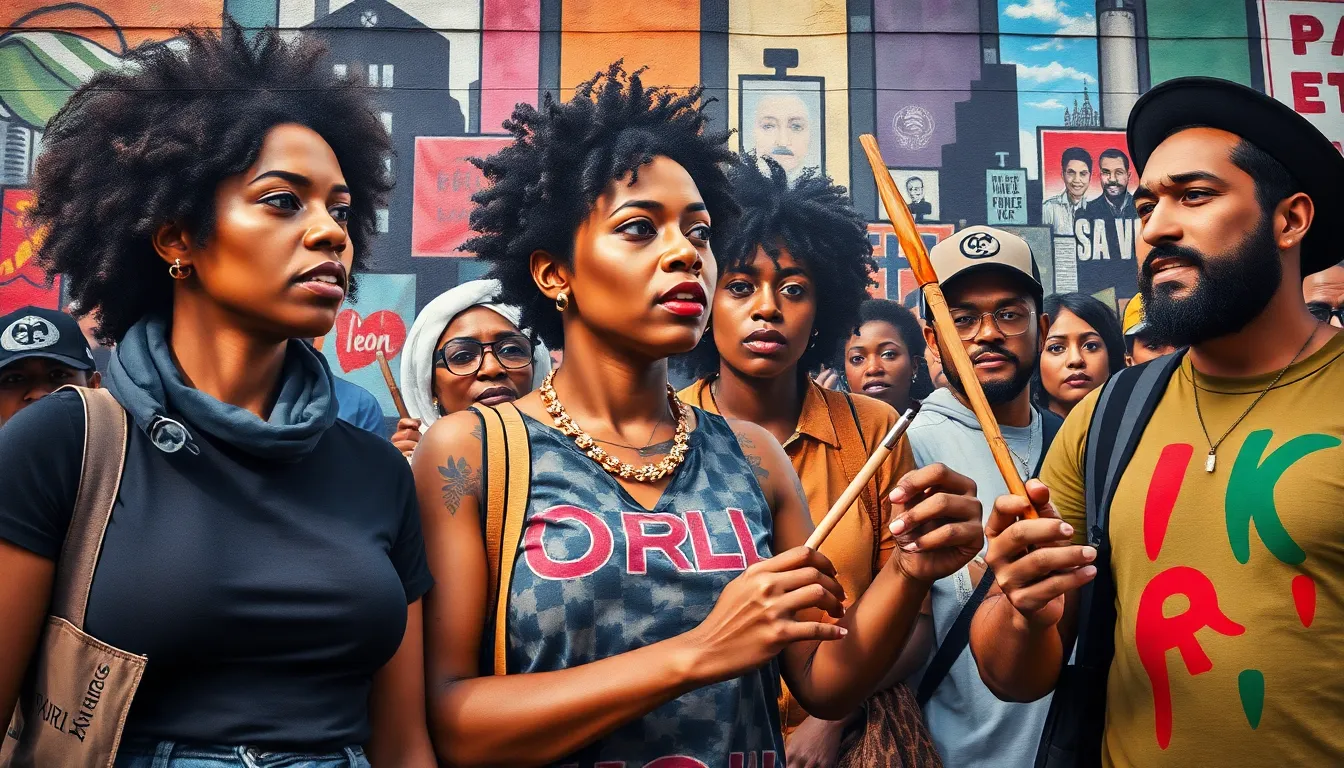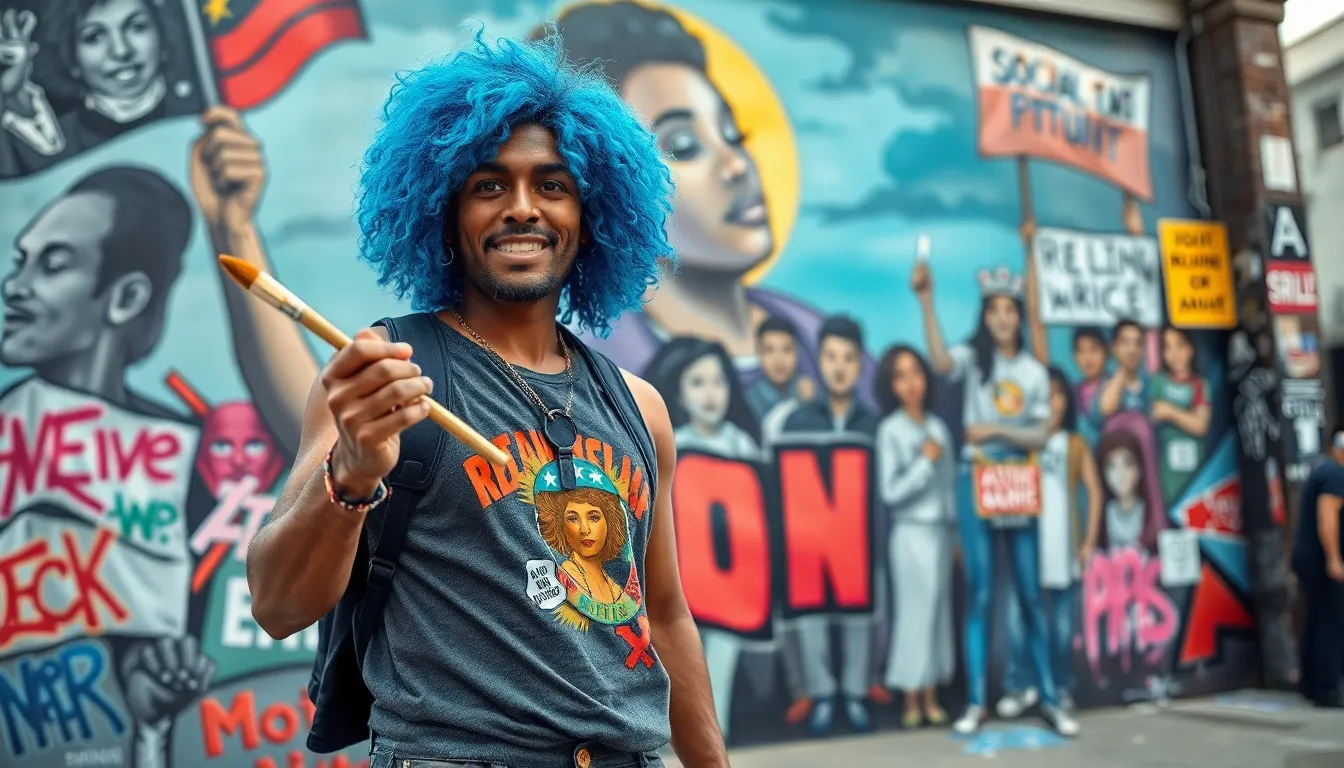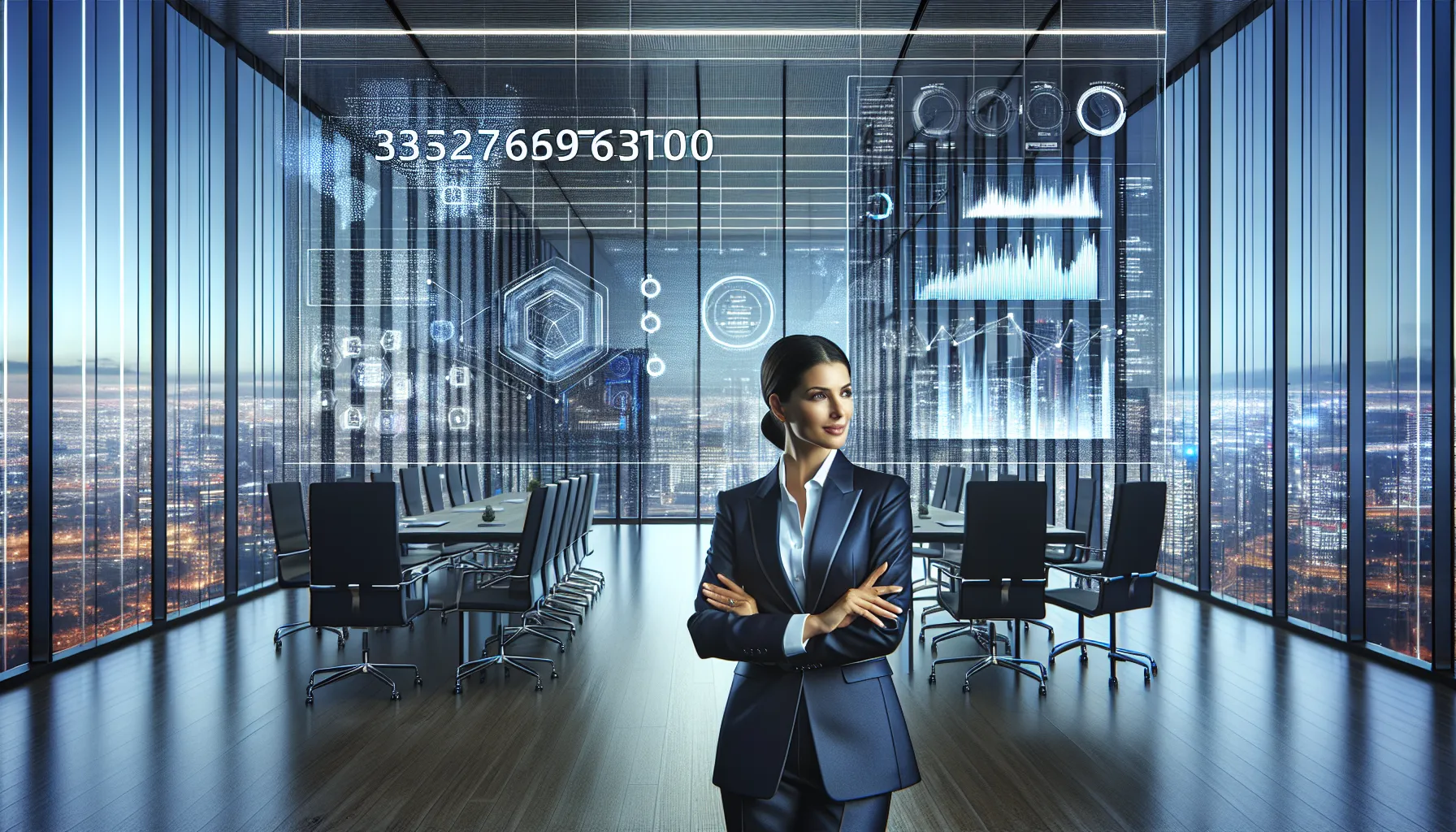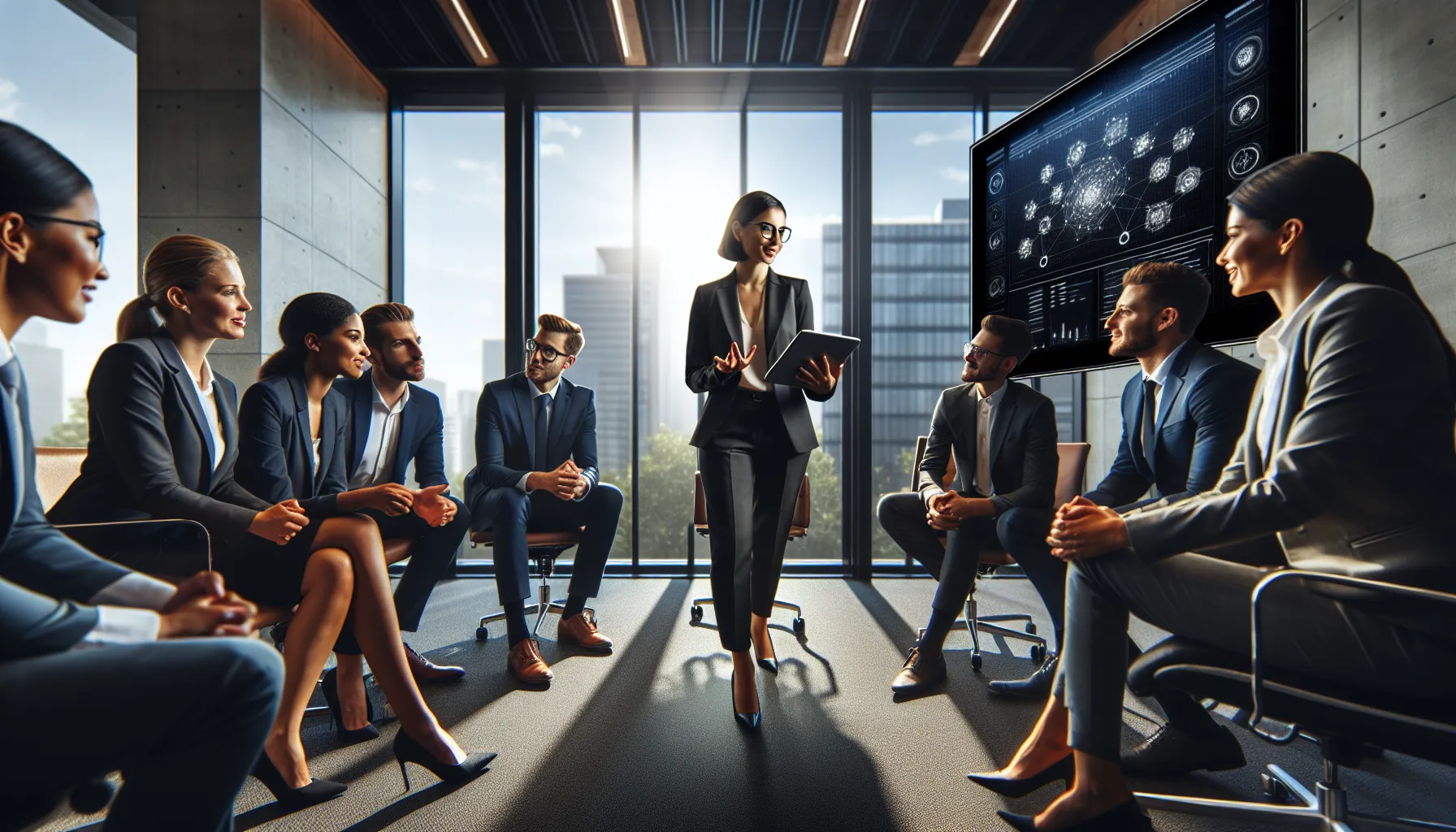Art and politics have danced together for centuries, often stepping on each other’s toes in a chaotic but fascinating waltz. From powerful propaganda posters to satirical cartoons, the interplay between creativity and governance reveals a world where paintbrushes can wield as much power as ballots. Who knew that a splash of color could spark a revolution or that a clever slogan could topple a regime?
In an era where social media amplifies voices, artists are becoming the new political pundits, using their craft to challenge norms and provoke thought. Whether it’s a mural that mocks authority or a performance piece that highlights injustice, art isn’t just for galleries; it’s a battleground for ideas. Dive into this colorful collision of expression and influence, where every brushstroke tells a story and every note strikes a chord in the ongoing symphony of societal change.
Table of Contents
ToggleOverview of Art and Politics
Art and politics intertwine in various ways, both influencing each other throughout history. Artistic expression provides a powerful vehicle for political commentary. Through mediums like painting, music, and literature, artists challenge authority and address societal issues.
Political movements often utilize art to communicate their messages. Propaganda posters and songs energize support for causes, shaping public perception. Similarly, satire in art critiques political figures and policies, holding them accountable.
In contemporary society, social media amplifies the role of artists in political dialogue. Creators share their work widely, reaching diverse audiences and fostering conversations around social injustices. Visual art, performances, and viral videos contribute to movements like Black Lives Matter and climate change advocacy.
Artwork often reflects the zeitgeist, capturing the sentiments and struggles of a particular era. During times of war or unrest, artists document and respond to the realities faced by communities. This responsiveness creates a rich tapestry of narratives that showcases resilience and resistance.
Exhibitions and public installations can serve as focal points for activism. These spaces provide platforms for underrepresented voices and encourage collective engagement. Events that highlight art’s political dimensions foster community solidarity and inspire action.
Art remains a dynamic instrument for change. Each piece of creative expression contributes to the broader narrative of political and social transformation. As artists continue to navigate the complexities of power, their impact on society remains profound.
Historical Context

Art and politics have intertwined throughout history, influencing societal movements and cultural narratives.
Ancient Civilizations
Ancient civilizations used art as a powerful tool for political expression. Mesopotamians created intricate sculptures to celebrate their rulers, establishing political legitimacy through artistic representation. Egyptian artwork depicted pharaohs alongside gods, reinforcing the divine right to rule. In Greece, dramatists explored themes of power and democracy through theater, provoking public discourse on governance. Artisans often served political leaders, crafting works that communicated state ideologies. Through these creations, they reflected societal values and served specific agendas, establishing art as both a medium of expression and a political instrument.
Modern Era
The modern era witnessed a significant shift in the relationship between art and politics. Movements like Dada and Surrealism emerged as responses to the chaos of World War I, challenging conventional political thought through innovative artistic expression. The propaganda artwork of World War II mobilized public sentiment, energizing support for military efforts. During the Civil Rights Movement, artists like Benny Andrews and Jacob Lawrence depicted struggles and aspirations, galvanizing social consciousness. In contemporary society, social media platforms allow artists to address pressing issues, fostering dialogue and activism. This evolution underscores art’s continual relevance in political discourse, shaping perceptions and inspiring change.
The Role of Art in Political Movements
Art plays a vital role in political movements by shaping narratives and influencing public opinion. Its ability to communicate complex ideas succinctly makes it an essential part of advocacy.
Propaganda and Its Influence
Propaganda utilizes art to sway emotions and promote specific ideologies. Illustrative posters, such as those produced during World War II, depict patriotic imagery to rally support for war efforts. Artists design works that effectively convey powerful messages, influencing societal attitudes towards governance and policy. Throughout history, totalitarian states leveraged propaganda to instill loyalty and suppress dissent. Modern examples include campaigns leveraging social media graphics, which reach broad audiences and mobilize grassroots activism. Strong visual strategies make propaganda a compelling element within political discourse, reinforcing the intended messages.
Art as Resistance
Art serves as a form of resistance against oppression and injustice. Creative expressions, such as murals and performances, often depict the struggles faced by marginalized groups. In countries with authoritarian regimes, artists challenge censorship through subversive works that critique power dynamics. Historical movements, like the Civil Rights Movement, showcased artists who articulated the fight for equality through compelling imagery and music. Current activists continue this tradition, using art to address social issues like climate change and inequality. Diverse forms of expression foster solidarity and motivate collective action, positioning art as a significant force in the struggle for social justice.
Notable Examples of Art and Politics
Art plays a critical role in political expression, and numerous notable examples highlight this relationship.
Iconic Artworks
Guernica by Pablo Picasso stands out as a powerful anti-war statement, created in response to the bombing of Guernica during the Spanish Civil War. Another significant piece is The Problem We All Live With by Norman Rockwell, illustrating the struggles of desegregation in America. Additionally, the mural on the Berlin Wall serves as a global symbol of resistance against oppression, depicting hope and unity. These artworks engage audiences, provoke dialogue, and challenge the status quo through visual narratives.
Influential Artists
Artists like Ai Weiwei embody the fusion of art and political activism. His installations critique the Chinese government’s human rights violations and call for social change. Similarly, Banksy utilizes street art to address various political themes, from war to consumerism. Frida Kahlo’s work reflects her struggle with identity and politics, capturing the complexities of Mexican culture and feminism. These artists influence public consciousness, using their platforms to confront authority and inspire movements for social justice.
The Impact of Technology on Art and Politics
Technology profoundly shapes the relationship between art and politics, facilitating new methods of expression and communication.
Digital Media
Digital media offers artists innovative tools to create and share their work. Platforms for digital art, including video and animation, enable artists to explore complex political narratives visually. For example, interactive installations often engage viewers in discussions about social issues. Through immersive experiences, artists challenge viewers to confront difficult topics. Various software programs allow for the combination of multiple art forms, leading to unique political statements. Digital art can quickly spread, reaching global audiences and sparking dialogue.
Social Media Platforms
Social media platforms serve as vital spaces for political activism and artistic expression. Artists utilize these platforms to showcase their work and mobilize support for political causes. Hashtags can amplify messages, allowing movements to gain traction quickly. For instance, campaigns like #BlackLivesMatter thrive on social media, uniting artists and activists. Visual content, such as images and videos, often travels faster than traditional media, broadening impact. Artists also interact directly with their audience, fostering community and collaboration. Social media empowers artists to push boundaries and influence political discourse effectively.
Art and politics are intricately intertwined forces that shape society and provoke thought. Through various forms of expression, art has the power to challenge authority and inspire change. As artists continue to navigate the complexities of today’s political landscape, their work remains a vital tool for social commentary and activism.
The evolution of this relationship highlights the enduring impact of artistic expression on political discourse. By confronting issues of injustice and inequality, artists not only reflect the world around them but also drive conversations that can lead to meaningful action. In a time when voices must be amplified, the role of art in politics will undoubtedly remain significant in the pursuit of a more just society.



